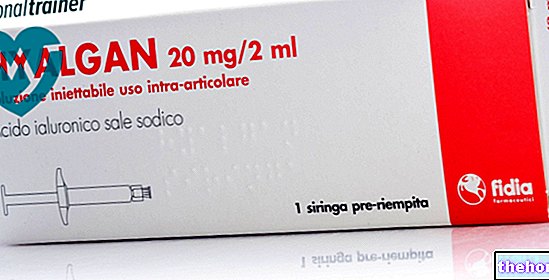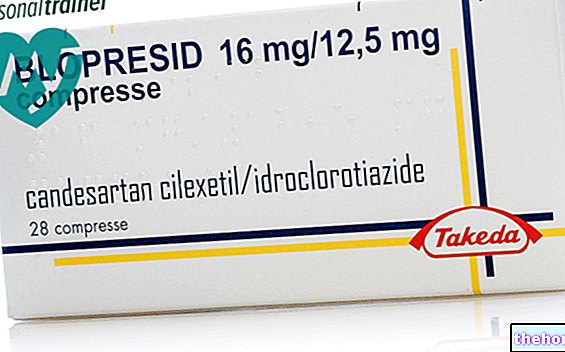Active ingredients: Desloratadine
Aerius 5 mg film-coated tablets
Aerius package inserts are available for pack sizes:- Aerius 5 mg film-coated tablets
- Aerius 5 mg oral lyophilisate
- Aerius 2.5 mg orodispersible tablets
- Aerius 5 mg orodispersible tablets
- Aerius 0.5 mg / ml oral solution
Indications Why is Aerius used? What is it for?
Aerius is an anti-allergic medicine that does not induce sleep. Helps control your allergic reaction and symptoms.
Aerius relieves symptoms associated with allergic rhinitis (inflammation of the nasal passages caused by an allergy, such as hay fever or dust mite allergy). These symptoms include sneezing, runny and itchy nose, itchy palate, watery eyes, itchy and watery eyes.
Aerius is also used to relieve symptoms associated with hives (a skin condition caused by an allergy). These symptoms include itching and wheals (blisters).
Relief from these symptoms lasts for the whole day and helps you get back to your normal daily activities and improve sleep.
Contraindications When Aerius should not be used
Do not take Aerius
- if you are allergic (hypersensitive) to desloratadine or to any of the other ingredients of Aerius or to loratadine.
Aerius is indicated for adults and adolescents (12 years of age and older).
Precautions for use What you need to know before you take Aerius
Be careful with Aerius especially
- if your kidney function is impaired.
If this applies to you or if you are not sure, consult your doctor before taking Aerius.
Interactions Which drugs or foods may change the effect of Aerius
There are no known interactions of Aerius with other medicines.
Using Aerius with food and drink
Aerius can be taken near or away from meals
Warnings It is important to know that:
Pregnancy and breastfeeding
Ask your doctor or pharmacist for advice before taking any medicine during pregnancy and breastfeeding. If you are pregnant or breastfeeding, the use of Aerius is not recommended.
Driving and using machines
At the recommended dose, Aerius is not expected to cause you to be drowsy or less alert. However, somnolence has occurred very rarely in some people, which may affect the ability to drive or use machines.
Important information about some of the ingredients of Aerius
Aerius tablets contain lactose. If you have been told by your doctor that you have an intolerance to some sugars, contact your doctor before taking this medicinal product.
Dose, Method and Time of Administration How to use Aerius: Posology
Adults and adolescents (12 years of age and older): take one tablet once a day. Swallow the tablet whole with water, with or without food.
Regarding the duration of treatment, your doctor will determine what type of allergic rhinitis you suffer from and how long you will need to take Aerius for.
If your allergic rhinitis is intermittent (symptoms present for less than 4 days over the course of a week or for less than 4 weeks), your doctor will prescribe a treatment schedule that depends on the assessment of your disease history. If your allergic rhinitis is persistent (having symptoms for 4 days or more over the course of a week and for more than 4 weeks), your doctor may prescribe long-term treatment.
In the case of urticaria, the duration of treatment may vary from patient to patient and therefore you must follow your doctor's instructions.
Overdose What to do if you have taken too much Aerius
If you take more Aerius than you should
Take Aerius only as it is prescribed for you. Serious problems from accidentally taking multiple doses are not expected. However, if you take more Aerius than prescribed, contact your doctor or pharmacist.
If you forget to take Aerius
If you forget to take your dose within the prescribed time, take it as soon as possible, then continue the treatment as usual. Do not take a double dose to make up for a forgotten dose.
Side Effects What are the side effects of Aerius
Like all medicines, Aerius can cause side effects, although not everybody gets them. In adults, side effects with Aerius were similar to those obtained with a tablet without an active ingredient (placebo). However, fatigue, dry mouth and headache have been reported more frequently than with one tablet without the active ingredient (placebo). In adolescents, headache was the most commonly reported side effect
During the marketing of Aerius, very rare cases of severe allergic reactions (difficulty breathing, wheezing, itching, hives and swelling) and rash have been reported. In addition, although very rarely, there have been reports of palpitations, increased heart rate, stomach pain, nausea (feeling sick), vomiting, stomach upset, diarrhea, dizziness, somnolence, insomnia, muscle pain, hallucinations, convulsions, hyperactivity, inflammation of the liver and abnormal liver function tests.
If any of the side effects gets serious, or if you notice any side effects not listed in this leaflet, please tell your doctor or pharmacist.
Expiry and Retention
Keep out of the reach and sight of children.
Store at a temperature not exceeding 30 ° C.
Store in the original packaging.
Do not take Aerius after the expiry date which is stated on the carton and blister. The expiry date refers to the last day of the month.
Tell your pharmacist if you notice any changes in the appearance of the tablets
Medicines should not be disposed of via wastewater or household waste. Ask your pharmacist how to throw away medicines you no longer use. This will help protect the environment.
What Aerius contains
The active ingredient is desloratadine 5 mg
The other ingredients of the tablet are dibasic calcium phosphate dihydrate, microcrystalline cellulose, corn starch, talc. The tablet coating contains a film (including lactose monohydrate, hypromellose, titanium dioxide, macrogol 400, indigo carmine (E132)), a clear coat (containing hypromellose, macrogol 400), carnauba wax, white wax.
What Aerius looks like and contents of the pack
Aerius 5 mg film-coated tablets are packaged in unit doses in blister packs of 1, 2, 3, 5, 7, 10, 14, 15, 20, 21, 30, 50, 90 or 100 tablets.
Not all pack sizes may be marketed
Source Package Leaflet: AIFA (Italian Medicines Agency). Content published in January 2016. The information present may not be up-to-date.
To have access to the most up-to-date version, it is advisable to access the AIFA (Italian Medicines Agency) website. Disclaimer and useful information.
01.0 NAME OF THE MEDICINAL PRODUCT
AERIUS 5 MG TABLETS COATED WITH FILM
02.0 QUALITATIVE AND QUANTITATIVE COMPOSITION
Each tablet contains 5 mg of desloratadine.
Excipient (s) with known effect:
This medicinal product contains lactose.
For the full list of excipients, see section 6.1.
03.0 PHARMACEUTICAL FORM
Film-coated tablets.
04.0 CLINICAL INFORMATION
04.1 Therapeutic indications
Aerius is indicated in adults and adolescents 12 years of age or older for the relief of symptoms associated with:
• allergic rhinitis (see section 5.1)
• urticaria (see section 5.1)
04.2 Posology and method of administration
Dosage
Adults and adolescents (12 years of age or older)
The recommended dose of Aerius is one tablet once a day.
Intermittent allergic rhinitis (presence of symptoms for less than 4 days over the course of a week or for less than 4 weeks) should be treated in accordance with the assessment of the patient's medical history and treatment stopped after resolution of symptoms and start over after they reappear.
In the case of persistent allergic rhinitis (presence of symptoms for 4 days or more in the course of a week and for more than 4 weeks), patients may be advised to continue treatment during the period of exposure to allergens.
Pediatric population
Experience from clinical trials evaluating the efficacy of desloratadine in adolescents aged 12 to 17 years is limited (see sections 4.8 and 5.1).
The safety and efficacy of Aerius 5 mg film-coated tablets in children aged less than 12 years have not been established. No data available.
Method of administration
Oral use.
The dose can be taken with or without food.
04.3 Contraindications
Hypersensitivity to the active substance, to any of the excipients listed in section 6.1 or to loratadine.
04.4 Special warnings and appropriate precautions for use
In case of severe renal insufficiency, Aerius should be used with caution (see section 5.2).
Patients with rare hereditary problems of galactose intolerance, the Lapp lactase deficiency or glucose-galactose malabsorption should not take this medicine.
04.5 Interactions with other medicinal products and other forms of interaction
No clinically relevant interactions were observed in clinical trials with desloratadine tablets in which erythromycin or ketoconazole were co-administered (see section 5.1).
Pediatric population
Interaction studies have only been performed in adults.
In a clinical pharmacology study, concomitant intake of Aerius tablets with alcohol was not shown to potentiate the harmful effects of alcohol on subjects' psychophysical abilities (see section 5.1). However, cases of alcohol intolerance and intoxication have been reported during post-marketing use. Therefore, caution is recommended in case of concomitant alcohol intake.
04.6 Pregnancy and lactation
Pregnancy
A large number of data in pregnant women (more than 1,000 exposed pregnancies) indicate that desloratadine does not cause malformations or fetal / neonatal toxicity. Animal studies do not indicate direct or indirect harmful effects with respect to reproductive toxicity (see section 5.3). As a precautionary measure, it is preferable to avoid the use of Aerius during pregnancy.
Feeding time
Desloratadine was detected in breastfed newborns and infants of treated women. The effect of desloratadine on newborns / infants is unknown. A decision must therefore be made whether to discontinue breast-feeding or to discontinue / abstain from Aerius therapy taking into account the benefit of breast-feeding for the child and the benefit of therapy for the mother.
Fertility
There are no data available on male and female fertility.
04.7 Effects on ability to drive and use machines
Based on clinical studies, Aerius has no or negligible influence on the ability to drive or use machines. Patients should be advised that most people do not experience sleepiness. However, as there is individual variability in response to all medicinal products, it is recommended that patients be advised not to engage in activities requiring mental attention, such as driving a vehicle or operating machinery, until the their response to the medicine.
04.8 Undesirable effects
Summary of the safety profile
In clinical trials conducted in a number of indications, including allergic rhinitis and chronic idiopathic urticaria, at the recommended dose of 5 mg per day, undesirable effects were reported with Aerius at a rate of 3% higher than with placebo. The most frequent adverse reactions reported in excess of placebo were fatigue (1.2%), dry mouth (0.8%) and headache (0.6%).
Pediatric population
In a clinical study in 578 adolescent patients, aged 12-17 years, the most common adverse event was headache; this event occurred in 5.9% of desloratadine-treated patients and in 6.9% of patients treated with desloratadine. of patients who received placebo.
Table of adverse reactions
The frequency of adverse reactions reported in excess of placebo in clinical trials and other adverse reactions reported from marketing are listed in the table below. Frequencies are defined as very common (≥ 1/10), common (≥ 1/100,
Pediatric population
Other undesirable effects reported during the post-marketing period in pediatric patients with an unknown frequency included QT prolongation, arrhythmia and bradycardia.
Reporting of suspected adverse reactions
The reporting of suspected adverse reactions after authorization of the medicinal product is important, as it allows continuous monitoring of the benefit / risk ratio of the medicinal product. Healthcare professionals are asked to report any suspected adverse reactions via the Italian Medicines Agency website : www.agenziafarmaco.gov.it/it/responsabili.
04.9 Overdose
The adverse event profile associated with overdose, as seen during post-marketing use, is similar to that seen with therapeutic doses, but the magnitude of the effects may be greater.
Treatment
In case of overdose, evaluate standard measures to remove the active ingredient not yet absorbed. Symptomatic and supportive treatment is recommended.
Desloratadine is not eliminated by hemodialysis; it is not known whether it can be eliminated by peritoneal dialysis.
Symptoms
Based on a multiple dose clinical study, in which up to 45 mg of desloratadine was administered (nine times the clinical dose), no clinically relevant effects were observed.
Pediatric population
The adverse event profile associated with overdose, as seen during post-marketing use, is similar to that seen with therapeutic doses, but the magnitude of the effects may be greater.
05.0 PHARMACOLOGICAL PROPERTIES
05.1 Pharmacodynamic properties
Pharmacotherapeutic group: antihistamine - H1 antagonist.
ATC code: R06A X27.
Mechanism of action
Desloratadine is a long-acting, non-sedating histamine antagonist with selective peripheral H1-receptor antagonist activity. After oral administration, desloratadine selectively blocks peripheral histamine H1 receptors being unable to diffuse into the central nervous system.
Desloratadine has shown anti-allergic properties in studies in vitro. These include inhibition of the release of proinflammatory cytokines such as IL-4, IL-6, IL-8 and IL-13 from human mast cells / basophils, as well as inhibition of the expression of the adhesion molecule P-selectin on endothelial cells. The clinical relevance of these observations remains to be confirmed.
Clinical efficacy and safety
In a repeat dose clinical study in which up to 20 mg of desloratadine was administered daily for 14 days, no statistically or clinically relevant cardiovascular effects were observed. In a clinical pharmacology study in which desloratadine was administered at doses of 45 mg per day (nine times the therapeutic dose) for ten days, no QTc prolongation was observed.
In repeat dose interaction studies with ketoconazole and erythromycin, no clinically relevant changes in plasma concentrations of desloratadine were shown.
Desloratadine is unable to effectively penetrate the central nervous system. In controlled clinical trials, at the recommended dose of 5 mg per day, there was no evidence of any excess incidence of somnolence compared to placebo. In clinical trials, Aerius was not shown to adversely affect the psychomotor skills of subjects at doses of 7.5 mg administered once daily. In a single dose study conducted in adults, administration of desloratadine 5 mg did not result in changes in standard measures of flight performance, including worsening of subjective sleepiness or flight-related tasks.
In clinical pharmacology studies, concomitant administration of alcohol did not reveal an increase in the negative effects of alcohol on psychophysical abilities or an increase in somnolence. No significant differences in psychomotor test results were observed between the desloratadine group and that group. treated with placebo, whether given alone or with alcohol.
In patients with allergic rhinitis, Aerius tablets were shown to be effective in relieving symptoms such as sneezing, nasal discharge and itching, as well as itchy, watery and red eyes, and itchy palate. Aerius effectively controlled symptoms for 24 hours.
Pediatric population
The efficacy of Aerius tablets has not been clearly demonstrated in studies in adolescent patients aged 12-17 years.
In addition to the recognized classification of seasonal and perennial, allergic rhinitis can alternatively be classified as intermittent allergic rhinitis and persistent allergic rhinitis depending on the duration of the symptoms. Intermittent allergic rhinitis is defined when symptoms are present for less than 4 days in the course of a week or for less than 4 weeks. Persistent allergic rhinitis is defined when symptoms are present for 4 days or more in the course of a week and for more than 4 weeks.
Aerius proved effective in relieving the symptoms of seasonal allergic rhinitis as demonstrated by the total score obtained from the rhino-conjunctivitis quality of life questionnaire. The most important improvement was found in the domain of practical problems and in daily activities limited by symptoms. .
Chronic idiopathic urticaria has been studied as a clinical model for urticaria, because the underlying pathophysiological process is similar, regardless of etiology, and because chronic patients can be more easily enrolled in prospective studies. is a causative factor in all types of urticaria, desloratadine is expected to be effective in providing symptomatic relief for other forms of urticaria, in addition to chronic idiopathic urticaria, as recommended by clinical guidelines.
In two six-week placebo-controlled clinical trials in patients with chronic idiopathic urticaria, Aerius was shown to be effective in relieving itching and reducing the size and number of hives by the end of the first dosing interval. each clinical study effects were maintained over the 24 hour dose interval. Similarly to other clinical studies conducted with antihistamines in chronic idiopathic urticaria, the minority of patients identified as non-responsive to antihistamines were excluded. An improvement in pruritus of more than 50% was seen in 55% of patients treated with desloratadine compared with 19% of patients treated with placebo. Treatment with Aerius also significantly reduced interference with sleep and daily activity, as measured by a four-point scale used to assess these variables.
05.2 Pharmacokinetic properties
Absorption
Plasma concentrations of desloratadine can be detected within 30 minutes of administration. Desloratadine is well absorbed with a peak plasma concentration approximately 3 hours after administration; the terminal half-life is about 27 hours. The degree of accumulation of desloratadine was consistent with its half-life (about 27 hours) and with the unique
daily administration. The bioavailability of desloratadine was dose proportional over the range of 5 mg to 20 mg.
In a pharmacokinetic study in which patient demographics were comparable to those of the general seasonal allergic rhinitis population, 4% of subjects achieved a higher desloratadine concentration. This percentage may vary according to ethnicity. The maximum concentration of desloratadine was approximately 3 times higher after approximately 7 hours with a terminal half-life of approximately 89 hours. The safety profile of these subjects was not different from that of the general population.
Distribution
Desloratadine is moderately bound to plasma proteins (83% - 87%). There is no clinically significant evidence of drug accumulation following a daily dose of desloratadine (5 mg to 20 mg) for 14 days.
Biotransformation
The enzyme responsible for the metabolism of desloratadine has not yet been identified, and therefore some interactions with other medicinal products cannot be completely excluded. Desloratadine does not inhibit in vivo CYP3A4 and studies in vitro have shown that the drug does not inhibit CYP2D6 and is neither a substrate nor an inhibitor of P-glycoprotein.
Elimination
In a single dose study using a 7.5 mg dose of desloratadine, there was no evidence of any effect of food (high fat and calorie breakfast) on the excretion of desloratadine itself. In a separate study it was found. found that grapefruit juice has no effect on the excretion of desloratadine.
Patients with kidney damage
The pharmacokinetics of desloratadine in chronic renal failure (CRI) patients were compared with that of healthy subjects in a single-dose and a multiple-dose study. In the single dose study, desloratadine exposure was approximately 2 and 2.5 times higher in subjects with mild to moderate and severe CRI, respectively, than in healthy subjects. In the multiple dose study, steady state is Exposure to desloratadine was achieved after Day 11 and compared to healthy subjects ≈ 1.5 times higher in subjects with mild to moderate CRI and ≈ 2.5 times higher in subjects with severe CRI. In both studies, changes in exposure (AUC and Cmax) to desloratadine and 3-hydroxydesloratadine were not clinically relevant.
05.3 Preclinical safety data
Desloratadine is the major active metabolite of loratadine. Non-clinical studies conducted with desloratadine and loratadine have shown that there are no qualitative or quantitative differences in the toxicity profile of desloratadine and loratadine at comparable drug exposure levels.
Non-clinical data reveal no specific hazard for humans based on conventional studies of safety pharmacology, repeated dose toxicity, genotoxicity, carcinogenic potential, reproductive and developmental toxicity. The absence of carcinogenic potential was demonstrated in studies conducted with desloratadine and loratadine.
06.0 PHARMACEUTICAL INFORMATION
06.1 Excipients
Tablet core: calcium hydrogen phosphate dihydrate, microcrystalline cellulose, corn starch, talc.
Tablet coating: film coating (containing lactose monohydrate, hypromellose, titanium dioxide, macrogol 400, indigo carmine (E132)), clear coating (containing hypromellose, macrogol 400), carnauba wax, white wax.
06.2 Incompatibility
Not relevant.
06.3 Period of validity
2 years.
06.4 Special precautions for storage
Do not store above 30 ° C.
Store in the original packaging.
06.5 Nature of the immediate packaging and contents of the package
Aerius is supplied in blister packs consisting of laminated blister film with sealing foil.
The blister pack materials consist of a polychlorotrifluoroethylene (PCTFE) / Polyvinyl chloride (PVC) film (surface in contact with the product) with an aluminum closure foil coated with a vinyl heat seal coating (surface in contact with the product) which is heat sealed.
Packs of 1, 2, 3, 5, 7, 10, 14, 15, 20, 21, 30, 50, 90, 100 tablets.
Not all pack sizes may be marketed.
06.6 Instructions for use and handling
No special instructions.
07.0 MARKETING AUTHORIZATION HOLDER
Merck Sharp & Dohme Ltd
Hertford Road, Hoddesdon
Hertfordshire EN11 9BU
UK
08.0 MARKETING AUTHORIZATION NUMBER
EU / 1/00/160 / 001-013
035201019
035201021
035201033
035201045
035201058
035201060
035201072
035201084
035201096
035201108
035201110
035201122
035201134
EU / 1/00/160/036
09.0 DATE OF FIRST AUTHORIZATION OR RENEWAL OF THE AUTHORIZATION
Date of first authorization: 15 January 2001
Date of most recent renewal: January 15, 2006
10.0 DATE OF REVISION OF THE TEXT
March 26, 2015




























